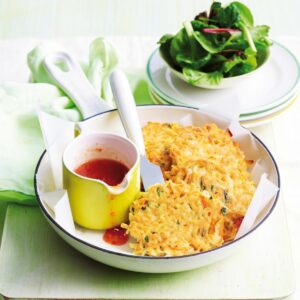
We know milk is good for us; but just how good is it?
Milk nutrition
Milk and dairy products are so important they are one of the four major food groups. It's recommended that we try to get at least two serves of dairy each day (or substitute with a high-calcium soy alternative). Examples of one serve are: a glass of milk; a pottle of yoghurt; or two slices of cheese.
Calcium intake is essential to developing the strongest bones we can when they are growing (up to our mid-twenties) and also to maintaining their strength throughout our lifetime. Calcium is stored in bones, so if we don't get enough calcium these stores are used for other essential functions, and your bones can be weakened.
Osteoporosis is a condition where parts of the bones become quite porous and are prone to fracture easily and one of the main risk factors is a lack of calcium in the diet. Osteoporosis affects more than 50% of women and nearly a third of men over 60. (See Food to fight osteoporosis article for more information.)
A 250ml glass of whole milk provides around 290mg of calcium; reduced-fat and super-trim milks around 350-375mg; and calcium-fortified milks range from 400-500mg. Check the label of your favourite milk to see how much calcium it has.
How much calcium do you need each day?
- Children 1-3 years: 500mg
- 4-8 years: 700mg
- Girls and boys 9-13 years: 1,000-1,300mg
- 14-18 years: 1,300mg
- Women 19-50 and men 19-70 years: 1,000mg
- Women over 50 and men over 70 years: 1,300mg
Types of milk
Full-fat milks contain around 4% fat, more than half of which is saturated fat. Given that we need to reduce the amount of saturated fat in our diets, we should all be drinking reduced-fat milks with around 1.5% fat or the trim and super-trim milks with 0.1-0.5% fat. You'll also be reducing your kilojoule intake while still getting the benefits of milk. A 250ml glass of whole milk has around 700kJ; reduced-fat milk around 500kJ; and super-trim can be as low as 360kJ.
Milk contains protein, riboflavin and vitamin B12. But the most important thing about milk is that it is very high in calcium compared to other foods, so milk is the easiest way to get the calcium your body needs. There are also a range of milks with added vitamins and minerals aimed at people at different life stages.
Flavoured milks can be a useful way of getting kids to drink milk, but be aware they do have added sugar and therefore extra energy – around 765-800kJ for a 250ml glass of Anchor Mega or Meadow Fresh Calci Kids flavoured milks. Primo, which seems to be aimed at an older age group, has less added sugar and around 660kJ in a glass, so it's not a bad snack choice for a growing teen.
Milk for infants and toddlers
Cows' milk should not be given to infants under 12 months of age; their digestive system is still developing and stomach bleeding can occur if fed cows' milk. There is also a risk of developing allergy, especially in families with a history of allergy.
Milk is a good source of nutrients and energy for toddlers, but they shouldn't have too much or they won't have capacity in their small stomachs for other foods they need to balance their diet. 500-600mls a day of whole milk is recommended for one to two year olds. Reduced-fat milks should not be used until after age two.
Adding milk to your day
Think of milk as a food rather than 'just a drink'. Unlike other high-energy drinks, it provides a range of vitamins and minerals and it's filling. People who drink sweetened carbonated drinks often add extra kilojoules to their diet without realising it because these drinks don't make you feel full. The moral of the story: if you're hungry drink milk, if you're thirsty drink water.
- Use milk on your cereal.
- Drink milk as a between-meal snack.
- Make a smoothie with milk and fruit like banana, kiwifruit, apricots, strawberries.
- Add yoghurt, oats and a few nuts to your smoothie and call it breakfast.
- Drink café latté or milky tea.
www.healthyfood.com










